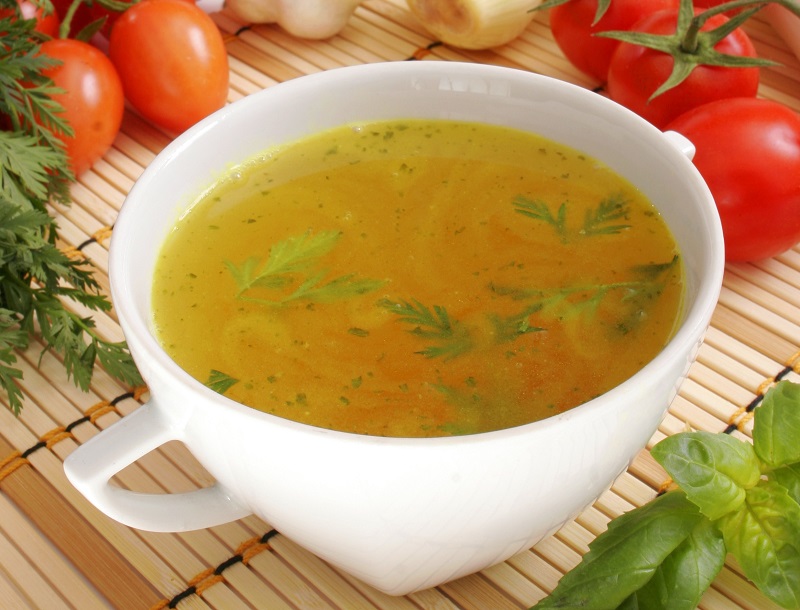Superfood Spotlight: Why You Should Be Eating Swiss Chard
Article posted in: Diet & Nutrition
When it comes to the heroes of healthy eating, Swiss chard might be one of the stealthiest. Kale grabs all of the headlines and new exotic fruits seem to appear every month, while Swiss chard humbly delivers powerful payloads of nutrients that protect our well-being and keep us functioning at our peak. You may not even know exactly what Swiss chard is or what to do with it, but we’re here to help fix that.
Here’s the skinny on Swiss chard—its nutritional benefits and how to incorporate it into your diet:
Nutrition Highlights
Swiss chard is very closely related to beets, but we eat its large, dark green leaves instead of the big underground root. Like other leafy greens, Swiss chard is at the top of the list of nutrient-dense foods. That is, it’s low in calories and high in essential vitamins and minerals. Swiss chard is a non-starchy vegetable, which means that you can eat as much of it as you want on the Nutrisystem program.
One cup of chopped raw Swiss chard has just seven calories, and provides more than 200 percent of your daily vitamin A needs, according to the U.S. Department of Agriculture. The leafy vegetable is also a valuable source of potassium, a mineral that helps your body maintain healthy sodium levels and blood pressure. Swiss chard supplies you with significant amounts of vitamin C, calcium and magnesium.
But the benefits don’t stop there! You get more than 300 percent of your RDA for vitamin K in a cup of Swiss chard. This nutrient helps manage blood clotting and aids in transporting calcium from your digestive tract to where it’s needed in your body. The vegetable is also loaded with a compound called biotin, which your body uses to process fats and sugars. (Bonus: Biotin helps keep your skin supple as you age.)
RELATED: The Benefits of Spinach >
Buyer’s Guide
Swiss chard is known by many other names: It’s also called leaf beet, silverbeet, spinach beet, Roman kale and strawberry spinach. By the way, it’s native to the area around Mediterranean Sea—not Switzerland.
The thick stems and the veins in the leaves may be white, yellow, green or red, which is why it is sometimes confused with red-stalked rhubarb (though that’s a completely different vegetable). There are no significant differences in taste or nutrition between the various colors.
In all cases, the leaves tend to be at least as dark as mature spinach or kale. Look for bunches with leaves that are vibrant, firm and crisp. If you like to eat your greens raw, choose Swiss chard with smaller leaves, which are milder in flavor and more tender than bigger ones. Large leaves are best for cooking.
Don’t wash Swiss chard until you’re ready to use it. You can store it in your refrigerator’s produce compartment for up to five days. If you keep vegetables in plastic bags in your fridge, leave the bag open so that moisture can evaporate, preventing mildew from growing and spoiling the produce.
RELATED: Why Eggs are so Egg-cellent >
Fresh Ideas
Rinse Swiss chard leaves in warm water before you prepare them. You can eat small leaves in their entirety—stems and all—but you’ll want to trim larger ones because the stalks become more fibrous as they get bigger. An easy way to separate the leaf from the stem is to fold it in half and slice along the stalk. The texture of the stems is similar to celery, so you can use them in cooked dishes in the same way as the familiar green stalks.
The leaves hold up well to cooking and can be used in place of kale or spinach in just about any recipe.
Now check out few simple (and delicious) ways to enjoy the superpowers of Swiss chard:
1. Smoothie

Small Swiss chard leaves blend well in fruity, sweet smoothies.
2. Braise

Add the leaves to steaming vegetable broth along with minced onions, raisins and a dash of vinegar. They need just a few minutes to wilt—when the leaves are soft, they’re ready to eat.
3. Saute

Heat a little olive oil in a large skillet. Add thin slices of garlic and red pepper flakes. When you can smell the garlic, add Swiss chard leaves and mix well with the oil. In about four minutes, you have a flavorful side dish.
4. Soup

Add chopped leaves and stalks to your favorite soup—homemade or canned—after it’s hot. They will gently wilt in the heat and virtually disappear.
5. Wrap

Swiss chard leaves are very sturdy, so they work well in place of wraps. You can fill them with grain salad, tuna fish or any other sandwich ingredient you like.
6. Pasta

Toss chopped Swiss chard leaves with cooked whole-grain pasta, a splash of olive oil, and a bit of Parmesan cheese for a quick and filling meal.
7. Lasagna

Add a layer of shredded Swiss chard leaves amidst the sauce, cheese and noodles.








